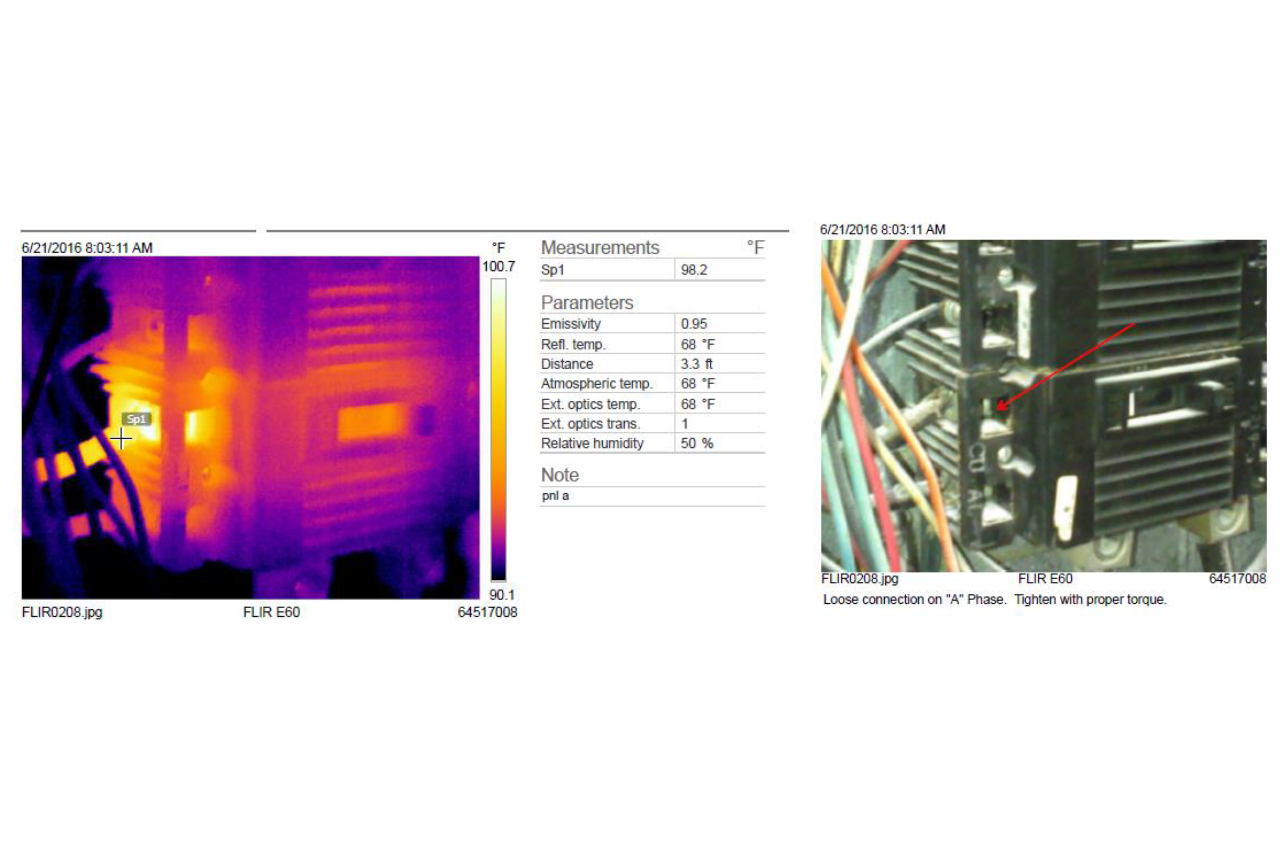Arcing refers to the electrical discharge that occurs between two points in a circuit, often accompanied by sparks and noise. This fault can be caused by loose connections, damaged cables, or deteriorated components. Arcing can result in premature equipment wear, damage to electrical components, and in extreme cases, lead to fires. Infrared thermography is a valuable tool for identifying arcing, as it can detect areas affected by the increased temperature associated with this abnormal electrical activity. Technicians can use thermography to locate and address arcing points, thereby reducing the risk of major damage and safety hazards.

It's important to emphasize that the presence of electrical arcing can be particularly dangerous for thermographers, especially when opening electrical panels. When an electrical panel is opened, there is a risk that electrical arcing may occur and cause a sudden explosion or fire. This is due to the release of energy in the form of extreme heat and bright light that can cause severe damage to surrounding equipment and jeopardize the physical integrity of the thermographer and other workers present.
Furthermore, electrical arcing can be accompanied by the expulsion of hazardous particles and substances, such as molten metals and toxic gases. These elements can cause burns, injuries, or inhalation of harmful substances. For this reason, thermographers are required to follow strict safety protocols when conducting inspections in areas with the risk of electrical arcing. Using appropriate personal protective equipment, understanding and adhering to electrical safety standards, and receiving training in the identification and mitigation of electrical arcing are crucial steps to ensure the safety of thermography professionals.
In accordance with NFPA 70E (the applicable standard set by the National Fire Protection Association), Arc Flash is described as a "hazardous condition resulting from the release of energy caused by an electrical arc." Arc flash typically arises during the operation of electrical systems, such as the opening or closing of circuit-breaker devices, which can lead to temporary disturbances in system isolation when the electrical insulation or separation between live conductors is breached or can no longer endure the applied voltage. In the vicinity of high-power electrical equipment, the available short-circuit power is significant, resulting in a correspondingly high energy level associated with the electrical arc in the event of a fault.

 cloud_download
cloud_download